IndiaWilds Newsletter Vol. 7 Issue IV
Tightening the Net on Activism:
Saving India’s environment, wildlife and their habitat is a continual challenge where one loses more often than not. Too often the protests, arguments infavour of saving a wilderness area is ignored and the conservationist had to continue fighting a lonely battle. At times the life and limb of the conservationist was threatened. However never before was the conservationist accused of working against the interest of his/her country, never before was he/she branded as a traitor, economic terrorist and foreign agent.
The BJP Government at the centre has systemically started throttling all the NGOs operating in this country after it won a majority in the Parliament elections in May 2014. One of the bigger NGOs Greenpeace, who never take any corporate funding, solely depending upon their parent as well as funding from Indian individual donors has been bearing the majority of the brunt of Governments actions. One Greenpeace activist was offloaded from the plane to London as she was traveling to meet a group of UK Member of Parliament’s. Later, while hearing this case the Delhi High Court gave some adverse remarks against the Government and said “Criticism, by an individual, may not be palatable; even so, it cannot be muzzled. Many civil rights activists believe that they have the right, as citizens, to bring to the notice of the state the incongruity in the developmental policies of the state. The state may not accept the views of the civil right activists, but that by itself, cannot be good enough reason to do away with dissent”. Unfortunately, despite this court order, the Government now has decided to move ahead to freeze all accounts of Greenpeace.
Greenpeace is not the only organisation to face the brunt of attack from the Government. The Ford Foundation is under the watch of the Government and it is said that about 5 million dollars worth of grants by the Ford Foundation has been blocked by the Government, apparently on the grounds that the recipients of such grants haven’t filed their annual reports and balance sheets with the Union Home Ministry.
These two NGOs are not the only ones who are under watch. There are many international donors as well as NGOs and activists who are under the Government’s lens. What is hurting many of them is being branded as anti-development and anti-national. With the limited attention span of people these days, the accusations of being anti-development and anti-national perception is likely to linger. Not many of them can stand this and protest against the Government’s blatant moves of sacrificing India’s environment and wildlife habitats for industries.
In it’s order in the Priya Pillai case, Justice Shakdher wrote “If the view advanced on behalf of the respondents is accepted, it would result in conferring uncanalised and arbitrary power in the executive, which could, based on its subjective view, portray any action as anti-national. Such a situation, in a truly democratic country, which is governed by the rule of law, is best avoided”. Unfortunately, the Government has decided not to avoid but actively pursue such abrogation of power to itself and persecute those who are opposing its industrialisation at any cost mantra.
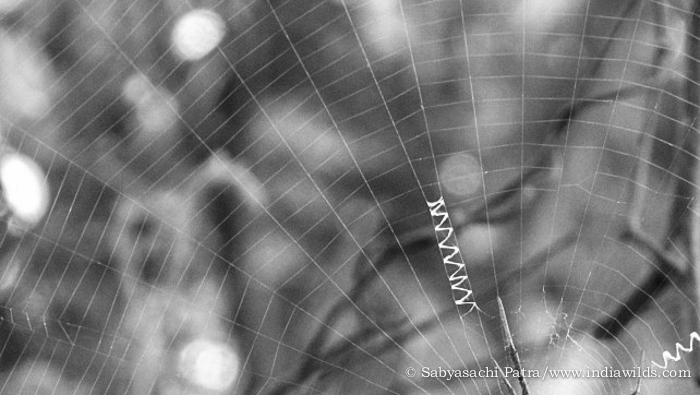
Tightening the net
Smaller NGOs and activists don’t have the wherewithal to withstand such Governmental pressure like Greenpeace and many of them will windup or keep mum when Wild India is being ravaged.
When the Government is actively muzzling dissent by wildlife and environmental activists there is another battle going on which on the surface is not about conservation but will massively impact activism.
In this age, when communication is predominantly online and activism is carried over through online portals, the move by TRAI (Telecom Regulatory Authority of India) to open consultations, by bowing to the pressure of telecom operators against net neutrality, can have major repercussions on conservation awareness generation and activism.
It appears that TRAI is likely to agree to the telecom operators and take a stance against net neutrality. So consumers will be forced to pay extra to access their favourite sites on top of their internet data plans. Also, telecom operators like Airtel want websites to pay them, else they will ensure that those sites will load very slowly so that internet users will stop trying to access such sites. It is like a local goon stopping access to a particular house because the residents of that house haven’t paid up, even though you have paid toll to travel in that road. So if TRAI changes India’s net neutrality stance, the sites like www.Indiawilds.com which are unaided and non commercial and engaged in creating awareness about conservation, would not be accessible to our members and users and will find hard to sustain. Even today, facebook ensures that posts in facebook pages with links to sites are not shown in the timelines of other people unless these links are promoted by paying money to facebook.
Environment and wildlife has few champions as even till date not many understand that our well-being and survival is intricately linked with protecting our environment, forests and wildlife. Unfortunately, with the internet appearing to be finally moving into the hands of the wealthy and powerful, the few voices trying to save Wild India would be cut off from others. It would be shouting within the confines of a closed, soundproof room. The future doesn’t appear to be rosy.
Is this Swachh Bharat?
I was in Bangalore and a stunning sight caught my attention. From a distance, it appeared to be icebergs floating on the water. The polluted water overflowing from the Bellandur lake, was creating a foam when it was falling from a height of a few feet. I came back in the evening and the foam had reduced, but appeared to be like a fine coating of ice flowing on the water.
When I moved closer, the stink was all pervasive. The toxicity of the water was evident. I couldn’t film it for more than a few minutes. This is the result of a complete breakdown of our sewage handling capabilities. The sewage treatment plants located in Koramangala and Challaghatta apparently dump their untreated sewage into the Bellandur lake during the night. So one can see much of foam in the morning and then later in the day the foam is reduced. There is complete apathy towards our waste disposal. There is a gap between the amount of sewage generated and the sewage handling capability. The location of the sewage treatment plants are also ill designed. To make matters worse, industrial effluents are dumped with impunity. The toxic water leaches into the ground and the ground water gets polluted. Despite living in expensive apartments, people are unaware that they are being slow poisoned. The situation may improve, if the politicians and especially the Member of Parliament of Bangalore Central Mr. P. C. Mohan (email: iampcmohan@gmail.com , twitter: @PCMohan_BJP ) should be invited there and asked to click a selfie, instead of posing for photographs with a broom somewhere else.
The lakes of Bangalore are dying due to pollution and reclaiming the lake bed for construction. The city of lakes is being turned into city of gutters. Debris are being dumped by builders and later reclaiming the land. With increased nutrients in the water due to pollution, eutrophication sets in. Birds like kingfisher have now become rare in this lake due to pollution and one cannot find any herpetofauna. This is not just an isolated case, as similar stories are being played out throughout the country. Unless, people come out and take charge of their areas, these sad situation is going to continue.
Swachh Bharat out of favour?
The Swachh Bharat campaign was launched with much fanfare. The Prime Minister was seen wielding the broom. The strategists of his party had believed that these photo-ops of the PM with the broom will not only appropriate Mahatma Gandhi’s legacy from the Congress party but also take away the sheen from the symbol of the Aam Aadmi Party (AAP) and its supporters will also be won over. Despite this campaign having a narrow focus, it was believed that there would be accelerated focus on building toilets throughout the country. It is another matter that just building toilets will not stop open defecation because people need enough water to keep the toilet clean. Many villages in Gujarat, have toilets built after the earthquake, however, they remain unused due to lack of water.
Unfortunately the Delhi elections results were far from conducive for the BJP. With the political mileage from this Swacch Bharat Campaign not giving immediate dividends to the ruling party, there appears to be a rethink. In the Union budget the provisions for the Swachh Bharat abhiyan is way less than expected. The Government though is prompt enough to slap an extra cess in the service tax to get some money for this initiative. However, if the Government is not serious in spending their money for their initiatives launched with so much of hype there perhaps is no future for this campaign.
The theme of the campaign strikes a chord with people as most people internally believe that our surroundings should be clean. It is another matter that some of these people don’t think twice before rolling down their car windows to throw the empty potato wafers packet on the road. Clearly, like the Government, the words of most of us Indians are not matched by our deeds.
As well meaning citizens, all of us should spread the message of cleanliness, stop littering and ensure that wastes are segregated and disposed properly.
No Learning from Uttarakhand landslides?
It is nearly two years since the massive landslides and flashfloods in Uttarakhand when thousands of piligrims and tourists died. The devastation was amazing. Media covered the news 24/7. The Indian army rose up to the occasion and saved many lives. However, the situation is quickly forgotten. Not much has changed in the ground. The unplanned urbanisation continues. The Government has still not created a ecosensitive zone notification. In its absence, people will continue to build houses on the river flood plains and other environmentally fragile areas. Perhaps we are waiting for another disaster to happen.
The recent earthquake on 25th of April, 2015 has caused a lot of devastation in Nepal. In comparison the loss of life and property in India is much less. However, experts have predicted more earthquakes as there has been a large build up of energy. The Himalaya, one of the youngest mountain ranges, is rising approximately one centimeter every year. This is a part of the process of the Indian sub-continent pushing against the Eurasian plate and it causes large build up of energy.
The Himalaya is fragile. Unrestrained and unplanned infrastructure building activities like dams, roads and canal building along with the associated blasting of rock and mountains, denuding the hills and mountains of all vegetation among other human interventions is a sure shot recipe to disaster.
There is lot of pressure on the Uttarakhand Government from the real-estate lobby and they seem to agree with this lobby in the name of development of the state. Both the Uttarakhand Government and the Central Government shouldn’t give in to this lobby. Unfortunately, it appears that our authorities haven’t learnt the lessons from the massive devastation from flashfloods and landslides of June 2013. I hope the authorities wake up from their slumber, because when history repeats itself, the results are usually deadlier than before.
Conservation News:
Economic Valuation of Sundarban Tiger Reserve
The Centre for Ecological Services Management (CESM) and Indian Institute of Forest Management (IIFM), Bhopal with support from National Tiger Conservation Authority (NTCA) has made the first ever Economic Valuation of 6 tiger reserves in India.
Commenting on the report Shri Prakash Javadekar, Union Minister of State (Independent Charge) for environment, forests and climate change wrote “These findings provide adequate justification for enhanced investment in such areas which is critical to ensure continued flow of vital life-supporting ecological, economic, social and cultural services from these genetic repositories.”
The salient points pertaining to the Sundarbans Tiger Reserve (falling within geographical boundary of India) is given below:
1. The total area of Sundarbans Tiger Reserve is 2,585 sq. km ( Core: 1330 sq.km., buffer: 1255 sq.km )
2. STR has at least 1,586 species of Protozoa and Animalia apart from 69 floral species belonging to 29 families.
3. About 270,000 people live around fringe villages around STR.
4. During 2013-14, a total of 157,600 man-days were generated by STR for various management activities in which local communities were involved. The economic value of employment generated by STR is estimated at Rs.3.25 crore per annum [@Rs.206 per man-day].
5. The economic value of fish caught from STR is estimated at Rs.160 crore per annum. Fish being the main protein for the underprivileged communities living around STR, in true sense the economic value of STR for fishing is significant — economically and culturally.
6. The standing stock of timber in STR is estimated at Rs.62,870 crore. This is significantly higher than Corbett, Kaziranga, Kanha, Periyar and Ranthambhore — the other 5 TRs included in the study.
7. STR has Carbon stock of over 22.38 million tonnes.
8. The net biosphere-atmosphere exchange of Carbon in Sundarbans is estimated at 2.79 tonnes per hectare per annum. Assuming this rate of Carbon sequestration across the entire forest area (1538 sq. km) of STR, annual quantity of carbon sequestered in STR is estimated at 0.43 million tonnes.
9. Using social cost of Carbon for India the total economic value of Carbon sequestered in STR is estimated at Rs.46.21 crore per annum.
10. The capacity of sewage treatment plant required for Kolkata is 250 million litres per day for population estimated
at 4.5 million. Considering the costs involved in operating such a plant, the economic value of waste assimilation
services attributable to STR for Kolkata alone is Rs.150 crore per annum.
11. The service provided by STR in moderating cyclones is worth Rs.27.5 crore per annum.
Contributed by Saktipada Panigraphi
Conservation Imagery:
Mass Bycatch Mortality of Sea Snakes, Goa
By Abhishek Jamalabad
Bycatch – the incidental, unintentional take of non-commercial, non-target species or undersized animals in fishing gear — has been an ever-increasing threat to the planet’s marine life, and is today considered one of the major threats to marine biodiversity the world over. The problem of bycatch is now a widely recognised and well-documented menace to threatened wildlife, including marine mammals, sea turtles, sharks and rays, and endangered seabirds such as the wandering albatross. Witnessing first-hand the devastation caused even by a relatively small-scale fishery is, however, something I had not anticipated during a stroll on the beach.
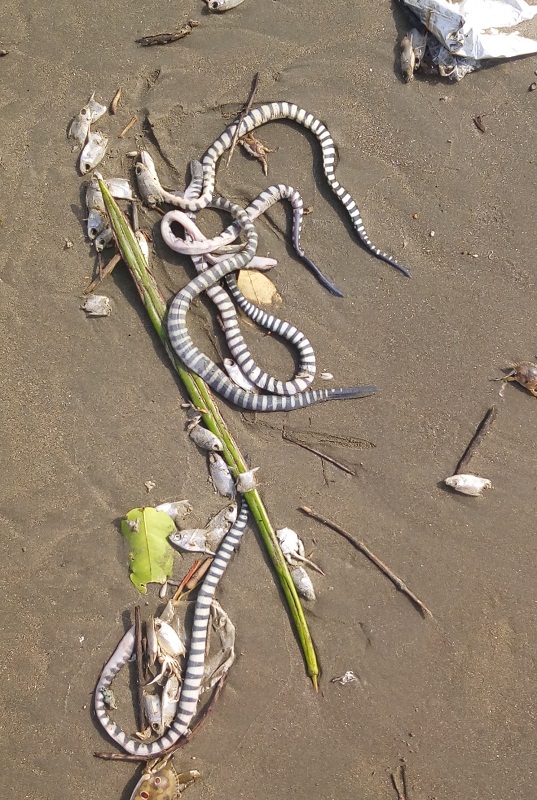
Juvenile Hook-nosed Sea Snake with other bycatch
I was out exploring a beach in Goa close to where I stay, and having seen a live sea snake on the beach the day before, I was half-expecting a similar find. Soon enough, I glimpsed the familiar form of a sea snake close to the tide line, but on getting closer, I found that it was dead. It was a juvenile Hook-nosed Sea Snake (Enhydrina schistosa), one of the commonest of sea snakes along the west coast, and the same species I had seen the previous day. As I walked on, I saw another of the same kind, also dead. To my surprise, more of them lay ahead.As I walked further on, a whole shocking sight revealed itself, and it was of a much greater scale than I had ever imagined. There were several of these snakes scattered over a 20-30 metre stretch of the beach. A few were bone dry, one had been fed upon by crows, but a great majority of them seemed fresh enough to have died very recently. I counted a staggering eighty-one sea snakes in the area, eighty of which were juveniles of approximately 1.5 feet in length; one was an adult of the same species. Only one of these snakes was still alive, and despite almost having dried up in the baking sun, it was healthy enough to swim away when I left it below the tide line. A couple of days later, I went to take a look at the same area again and once again found a similar scene — this time there were sixty-nine dead, and once again, all but two were juveniles. Most were scattered in the same area as on the previous occasion.
The area happened to be a part of the beach where shore seines are hauled and the catch landed, which led me to guess the connection between the fishery and this mass mortality of sea snakes. My hunch was confirmed by a few local children I met on the beach the same evening, as well as by local fishermen I spoke to the following morning. Shore seines are long wall-like nets that are set in an arc in near-shore waters, and hauled towards shore by teams of fishermen pulling the two ends in. The net completely encloses the area between itself and the shore, gathering up all the animals within this area, including the sea snakes in this case.
In the course of a brief chat with the fishermen, they claimed that mass sea snake bycatch events happened multiple times a year, but they did not know much about the exact times of year when these events were expected to occur. Sea snakes are also intentionally killed for the same reason other snakes are- the fear that their mere existence and presence is a threat. On one of my excursions, I saw fishermen pick out a three-foot-long adult from their net and promptly proceed to bludgeon it, justifying the act by saying the snake was “poisonous” and “too dangerous to be released alive”. Hook-nosed sea snakes can remain active when stranded (as compared to the generally sluggish behaviour of most other sea snakes on land, barring the sea kraits), often thrashing about when handled, and it is possible that this feisty nature, in addition to the well-known toxicity of its venom, contributes to their reputation as a menace. From one fisherman’s point of view, releasing a sea snake would be a bad idea as it would continue to live there, continue to turn up in his net and hence continue to be a threat to his life.
It is clear that this problem can effectively be solved only by aiding fisher folk to alter their perception of sea snakes, understand more about the lives of these animals and acknowledge their role in maintaining the integrity of a marine ecosystem as a whole — an ecosystem which ultimately forms the very basis of their livelihood.
[A special thank you to Dr. Aaron Savio Lobo for a lot of valuable learning and for encouraging me to probe deeper into this phenomenon.]
IndiaWilds App for Android Mobile
In India most of the internet penetration is happening through mobile phones. And the existing users who have access to desktops and laptops are becoming much more mobile then they used to be a few years ago. So to raise awareness and reach out to more people we need to adapt ourselves and make IndiaWilds easily accessed through a mobile phone using android OS.
Today, I am pleased to announce that we have created a mobile phone app so that people can access IndiaWilds anytime, anywhere without being tied to a computer. No need to type. One can access at the click of a button.
We have developed this app through Business Compass LLC a company based in Randolph, New Jersey, United States so that we create a good app.
Awareness is the first step before a person can become a champion of wildlife. I hope this will help us in reaching out to more people to raise awareness and make a real impact on the conservation landscape. If you have an android device then please download the app from this link:
https://play.google.com/store/apps/details?id=com.businesscompassllc.indiawilds
Equipment Discussions
Canon Announces the EOS C300 Mark II
Canon announces the Mark II version of the immensely successful EOS Cinema C300 camera.
I have been eagerly waiting for this camera. As expected it will have 4K capability. There is a massive increase in dynamic range over the Canon C300 and it records at 15 stops dynamic range in Canon CLog2. The 10bit 4k and 10/12 bit 2K/Full HD files would be much malleable in post processing. The previous Canon C300 has 8 bit files and I had not faced problems grading it. Nevertheless, anyone wishing to push and pull the files to the max will love the 10 bits/12bit files. My C300 review was here:http://www.indiawilds.com/diary/revi…dlife-filming/
Will do a similar thorough review of the C300 Mark II later.

Canon C300 Mark II
One important feature is that in the 2K mode, the C300 Mark II can shoot at 120fps (100fps in PAL) in crop mode. For wildlife, this would be a nice thing to have.
Video Devices Launches Pix-E series Monitor recorders
Video Devices, a division of Sound Devices, has launched the Pix-E series of monitor recorders. These monitor recorders have full HD 1920×1080 IPS touch screens. To make these monitor screens readable in sunlight they have made it ultra bright at 500nits. The screen is protected by Gorilla glass 2, so one wouldn’t be worried about scratches while packing or handling.

It is the first monitor recorder to support the Apple ProRes 4444 XQ. There are some pretty innovative features built-in to these monitor recorders. One can tap on the screen to zoom in. There are also the other standard features like false colour, zebras, waveform monitor, histogram and vectroscope.
Video Devices have announced three models in the Pix-E line up with two of them in 5inch and one being a 7 inch monitor. The 5 inch model Pix-E5H is the lowest in the line-up and is HDMI only. The other 5 inch model Pix-E5 is both HDMI and SDI. The 5 inch models are 441 ppi. The 7 inch model Pix-E7 is both HDMI and SDI and the screen is 323 ppi.
All these three monitors record 4K at 24p and 1080 at upto 60p. I hope the 4K would be atleast 25p so that while shooting here in India or in other PAL countries, it would be useful. These monitor recorders would be available in the summer.
The PIX-E series monitor recorders use SpeedDrive, which is an industry standard mSATA drive contained within a custom-designed enclosure. The SpeedDrive, plugs directly into the PIX-E, and has USB 3.0, so one doesn’t need a separate card reader to download. With USB 3.0 one can download at high speed to the computer.
One can buy either a 240 GB SpeedDrive or buy an Enclosure-Only version and use separately available mSATA drives in it from 128 GB to 1 TB. This feature will be popular, as it bypasses the stringent proprietary and costly SSD mode adopted by Convergent Design for its 7Q/7Q+ series.
Price of Pix-E series :
Pix-E5H : $1195 usd
Pix-E5 : $1395 usd
Pix-E7 : $1595 usd
Canon Introduces the XC10 Video camera
Canon has introduced the compact and lightweight XC10 4K Digital Camcorder for Creative Multi-Media Image Makers. The XC10 can also shoot 12 Megapixel still shots.

Canon XC10 Video camera
Apart from 4K, the XC10 camcorder can also shoot Full HD video and one can also extract eight megapixel still images from the recorded 4K video.
The XC10 has got a One inch CMOS sensor with 10x wide-angle zoom lens with an attached 2x teleconverter and built-in image stabilisation. The lens can zoom from 24.1 mm to 241mm for still shots and 27.3mm to 273 mm while shooting videos.
Dynamic range: The XC10 has upto 12 stops of dynamic range.
Processor: DIGIC DV5
Image Stabilisation: 5-axis image stabilisation in Full HD mode and in slow and fast motion. However, this 5-axis Image Stabilisation is not available in 4K mode, ostensibly due to processor requirements.
Codec: The XC10 uses XF-AVC Intra for 4K and XF-AVC Long GOP for Full HD. C-log, Wide DR and EOS Standard profiles are available. The recording is done to CFast cards.As is expected from Canon these days, Continuous AF mode with Face Detection is available.
Dedicated Microphone input and head phone jack for sound monitoring is provided. However, there are no XLRs. The XC10 features a variable LCD, built-in ND filter, and ISO speeds can be set from 160 to 20,000. Optional Canon accessories include a Direct Viewfinder for eye-level shooting in bright conditions.
Size: approx. 4.9 x 4.0 x 4.8 inches, WxHxD
Weight: 2.3 pounds.
Pricing and Availability: $2499 usd, to be available in June 2015.
Preorder: One can preorder it at B&H site by following this link: http://www.bhphotovideo.com/c/buy/Canon_XC10/Ntt/Canon%2BXC10/N/0/kw/search/BI/19990/KBID/13252/DFF/d10-v1-t12
Black Magic announces 38 new products including 4.6k Ursa camera
Black Magic Design has launched a humongous 38 products to coincide with the NAB 2015 show at Las Vegas. This includes a sensor update to the Ursa camera, a new smaller version of Ursa camera called the Ursa Mini and a host of products. I am sharing the email from Grant Petty, the CEO of Black Magic. These Black Magic cameras can be ordered from B&H by clicking the following link: http://www.bhphotovideo.com/c/buy/Ne…0745/view/GRID

URSA 4.6k camera
Natural History
COUNTRY NOTEBOOK: M. Krishnan: ‘Exercise in Barbet-watching’ By Saktipada Panigrahi
http://www.indiawilds.com/forums/showthread.php?8852-Country-notebook-m-krishnan&p=75001#post75001
Wildlife Photography
Jungle Cat Bandhavgarh: Vipin Sharma
http://www.indiawilds.com/
Tiger cub on tree by Rajbir Oberoi
http://www.indiawilds.com/
Mating macaques by Debasis Bose
http://www.indiawilds.com/
Small Pratincole by Mangru Minz
http://www.indiawilds.com/
Blue Rock Thrush by Kaling Dai
http://www.indiawilds.com/
Two Fighters by Samrat Sarkar
http://www.indiawilds.com/
Polaris by Dr. Jitendra Katre
http://www.indiawilds.com/
Water Monitor Lizard on Tree by Abhirup Dutta Gupta
http://www.indiawilds.com/
Jaws of Vine Snake by Abhishek Jamalabad
http://www.indiawilds.com/
Sundarbans: Salt water Crocodile by Saktipada Panigrahi
http://www.indiawilds.com/
Tresspassers will be Arm wrestled: By Abhishek Jamalabad
http://www.indiawilds.com/
Aggression: Bee vs Ant by Kaling Dai
http://www.indiawilds.com/
I look forward to your inputs and support in preserving the last tracts of wilderness and wildlife left in our beautiful country. For other interesting articles and images check –http://www.indi
To post in the IndiaWilds forums, you can register free of cost using your Full Name as user id at
http://www.indiawilds.com/forums/register.php
If you are already a member of IndiaWilds and have forgotten your user id and/or password you can mail to
administrator@indiawilds.com
If you want to contribute original articles, or for any image enquiries please send a mail to
administrator@indiawilds.com
Regards,
Sabyasachi Patra
Profile:http://www.indiawilds.com/about.htm
Contact:http://www.indiawilds.com/contact_us.php
Facebook:http://www.facebook.com/pages/IndiaWilds/132629240481
Diary:http://www.indiawilds.com/diary/
Equipment reviews:http://www.indiawilds.com/diary/category/equipment/
Forums:http://www.indiawilds.com/forums/index.php
IndiaWilds Channel:http://www.youtube.com/indiawilds
Please post your views and feedback in the comments below.
- GoPro Hero 12 Black - 6 September,2023
- Leopards: The Last Stand - 2 July,2023
- Drifting in the Waters of Sundarbans - 26 March,2023




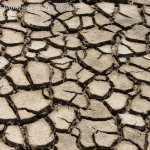
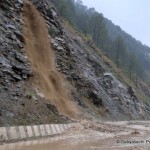
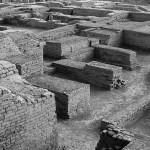





Dear Sabya sir;
Let’s not lose our fighting spirit. It is still possible to overcome. At present all things seems contrary, but you and I have seen enough life to know what goes up quickly may fall one day rapidly. We have to have hope, have courage, still see the dreams and fight on, wherever in whatever manner.
We have a abiding duty to our future generations and to the GOD.
Regards;
Subhash
Dear Subhash!
You are absolutely right. There are days when we feel down and out. However, we need to quickly pick ourselves up and continue with our efforts.
Your words reminded me of the old wise saying from Gita :
“Karmanyevadhikaraste ma phaleshu kadachana,
Ma Karmaphalaheturbhurma Te Sangostvakarmani” meaning
“you have the right to work but not to its fruits,
let not the fruits of action be your motive, nor let your attachment be to inaction”
Cheers,
Sabyasachi